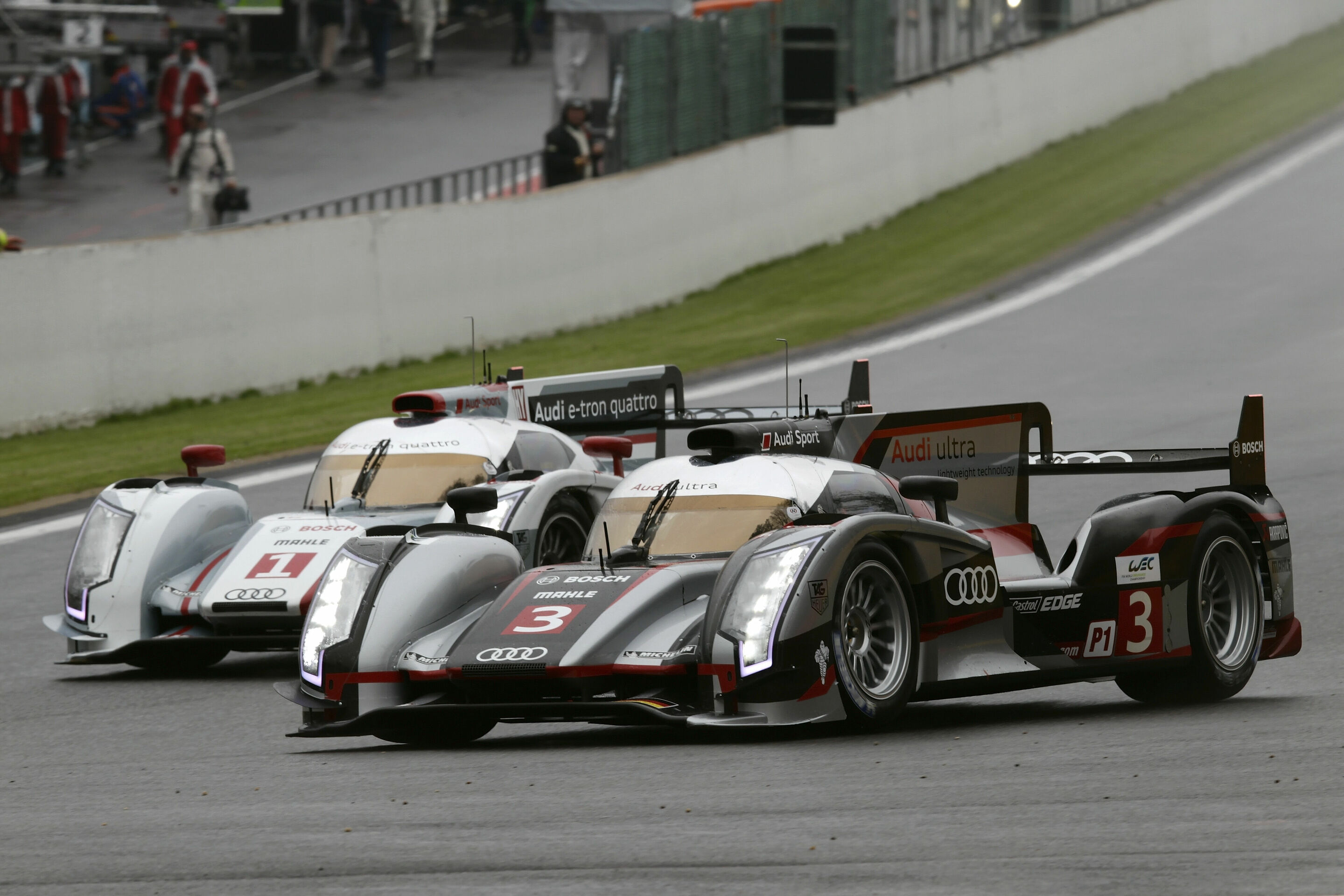Twins for Le Mans: Carry-over parts concept in the Audi R18 e-tron quattro and R18 ultra
- Efficient design of different vehicle models
- Benefits for spare parts strategy and costs
- One week to go before the start of the Le Mans 24 Hours
Audi will compete with two different models at the Le Mans 24 Hours next week – the R18 e-tron quattro and the R18 ultra. Thanks to the carefully devised concept the technical and logistical effort that is required for both models is exceptionally low – a few surprises included.
When the technical and logistical teams prepare for the year’s biggest event – the Le Mans 24 Hours – a complex preparation phase is followed by the most intensive week of the year. Audi Sport and Audi Sport Team Joest are ready for the near-5,000-kilometer race. They try to predict all the things that could possibly happen, practice the exchange of vulnerable parts time and again, check the fit of spare parts on the subsequent race car, establish emergency plans for repairs and preassemble entire component assemblies such as the suspension corners on the chassis.
“This effort is immense but necessary in order to be well prepared for this ‘24-hour sprint,’” says Head of Audi Motorsport Dr. Wolfgang Ullrich, speaking from the experience of ten overall Le Mans victories. “Considering these circumstances, fielding two different vehicles is actually a nightmare for all logisticians and members of our technical staff.”
In 2012, Audi is competing in the FIA World Endurance Championship (WEC) with two models – the R18 ultra and the R18 e-tron quattro. This first diesel hybrid race car at Le Mans fundamentally differs from the conventionally powered model in some respects. The e-tron quattro, for example, has an electrically driven front axle in addition to the conventional rear-wheel drive, a motor generator unit (MGU) on the front axle, a rotating mass storage device, an additional cooling system and new detailed solutions.
“This makes it all the more surprising that our engineers have implemented a principle featuring a high level of carry-over parts,” emphasizes Dr. Ullrich in praise of his team’s achievements. “The R18 ultra is the basis that has made it possible to make the R18 e-tron quattro reality in the first place. We would have had no chance if we hadn’t achieved the weight saving between our 2011 Le Mans winner, the R18 TDI, and the current R18 ultra because we had to additionally package the entire hybrid system in the vehicle. And in spite of this, we continued to pursue the aim of staying below the minimum weight of 900 kg in order to have some latitude to balance the car with ballast.”
Audi mastered this challenging two-fold task in every detail through purposeful design and assembly logic. To name just one example: The Audi R18 ultra uses exactly the same monocoque as its sister model featuring, among other things, two openings for the front drive shafts which of course are only needed for the quattro all-wheel drive.
A modern sports prototype is made up of around 4,000 single components – from a plain washer as one of the smallest parts through to the large body elements such as the rear cover. “Despite the major conceptual differences between hybrid drive and conventional diesel-powered rear-wheel drive we managed to keep the number of hybrid-specific single parts below 100,” reveals Dr. Ullrich. Consequently, the difference in terms of assembly components between the two sports prototypes featuring totally different exterior graphics amounts to only around 2.5 percent.
So, the “twins” for Le Mans are nearly identical – with amazing consequences. If, for instance, a logistical situation at an overseas race would require a damaged car to be prepared again from scratch on location after a practice accident a swapping of parts would be conceivable. “Even though such a requirement is not very likely to occur we could at least theoretically convert an R18 ultra into an R18 e-tron quattro,” explains Dr. Ullrich. A particularly interesting aspect: “The technical conversion would take less time than the complex application of new graphics to the bodywork.” If an unmarked R18 e-tron quattro were to be parked alongside an equally carbon-black R18 not even the technical crews of Audi Sport could externally distinguish the two cars from each other. Only a small diode behind the right-hand driver’s door indicates the operating condition of the hybrid system in the R18 e-tron quattro.
The many fans lining the Le Mans circuit can meanwhile look forward to a thrilling battle of the concepts. The Audi R18 e-tron quattro cars number “1” and “2” in the field stand for hybrid drive and the number “3” and “4” vehicles for ultra lightweight design and a highly sophisticated conventional concept. The logisticians at Audi immensely enjoy both race car models.
– End –
